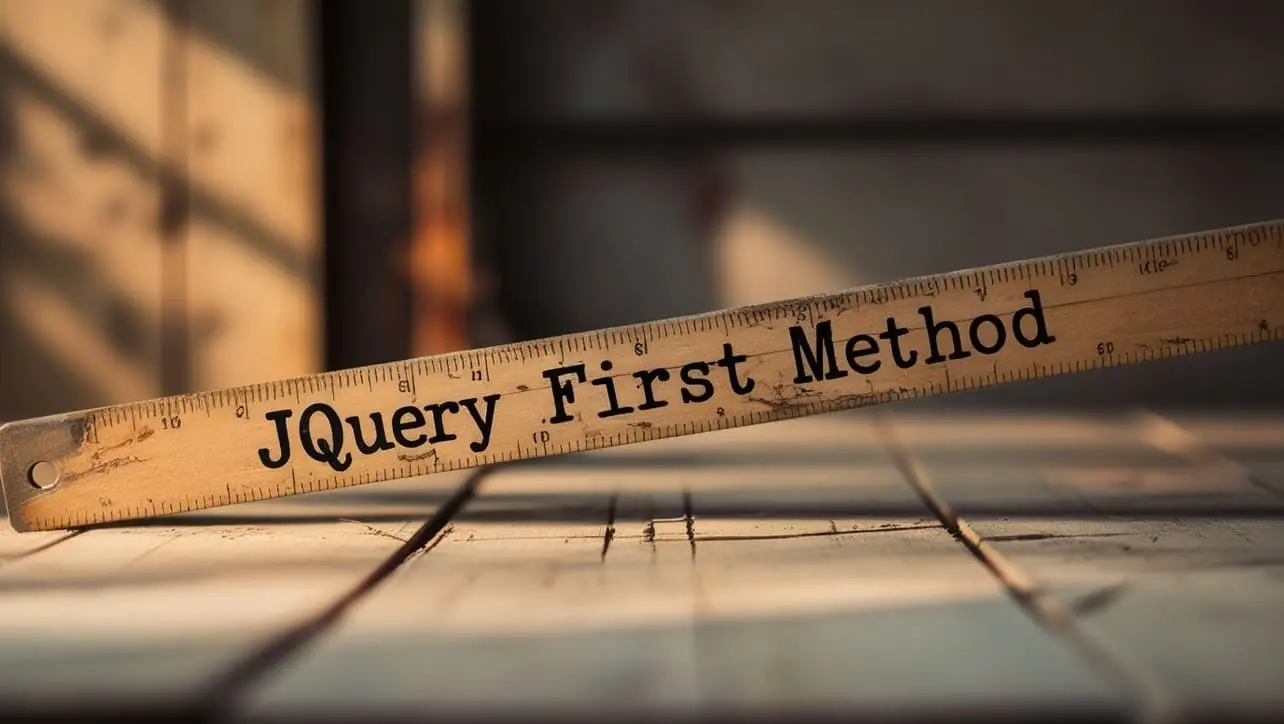
jQuery Topics
- jQuery Introduction
- jQuery Callbacks
- jQuery deferred
- jQuery selectors
- jQuery Ajax Events
- jQuery Ajax Methods
- jQuery Keyboard Events
- jQuery Keyboard Methods
- jQuery Form Events
- jQuery Form Methods
- jQuery Mouse Events
- jQuery Mouse Methods
- jQuery Event Properties
- jQuery Event Methods
- jQuery HTML
- jQuery CSS
- jQuery Fading
- jQuery Traversing
- jQuery Utilities
- jQuery Properties
jQuery .first() Method

Photo Credit to CodeToFun
🙋 Introduction
jQuery is renowned for its simplicity and efficiency in web development. Among its arsenal of methods, the .first() method stands out as a handy tool for selecting the first element(s) in a jQuery object. Understanding how to effectively utilize .first() can streamline your code and enhance your ability to manipulate DOM elements.
In this guide, we'll explore the intricacies of the jQuery .first() method through clear examples, enabling you to harness its power in your web projects.
🧠 Understanding .first() Method
The .first() method allows you to retrieve the first element(s) from a jQuery object. It's particularly useful when you need to target specific elements within a set of matched elements.
💡 Syntax
The syntax for the .first() method is straightforward:
$(selector).first()📝 Example
Selecting the First Element:
Suppose you have a list of elements and you want to select the first one. You can achieve this using the
.first()method as follows:index.htmlCopied<ul> <li>Item 1</li> <li>Item 2</li> <li>Item 3</li> </ul>example.jsCopied$("li").first().css("color", "red");This will set the text color of the first <li> element to red.
Chaining .first() with Other Methods:
You can chain the
.first()method with other jQuery methods to perform more complex operations. For example, let's hide the first paragraph of a div:index.htmlCopied<div> <p>First paragraph</p> <p>Second paragraph</p> <p>Third paragraph</p> </div>example.jsCopied$("div").find("p").first().hide();This will hide the first paragraph within the div.
Filtering Elements Before Using .first():
You can also combine
.first()with filtering methods to select the first element(s) based on specific criteria. For instance, let's select the first visible button in a container:index.htmlCopied<div id="container"> <button style="display:none;">Button 1</button> <button>Button 2</button> <button>Button 3</button> </div>example.jsCopied$("#container").find("button:visible").first().text("First Visible Button");This will set the text of the first visible button to First Visible Button.
Dealing with Empty Sets:
When using
.first()on an empty set, it returns an empty jQuery object. You can handle this scenario gracefully in your code to avoid unexpected behaviors.
🎉 Conclusion
The jQuery .first() method is a versatile tool for selecting the first element(s) within a jQuery object. Whether you need to target the initial element, chain it with other methods, or filter elements based on specific criteria, .first() provides a concise and efficient solution.
By mastering its usage, you can streamline your DOM manipulation tasks and create more responsive and interactive web applications.
👨💻 Join our Community:
Author

For over eight years, I worked as a full-stack web developer. Now, I have chosen my profession as a full-time blogger at codetofun.com.
Buy me a coffee to make codetofun.com free for everyone.
Buy me a Coffee












If you have any doubts regarding this article (jQuery .first() Method), please comment here. I will help you immediately.